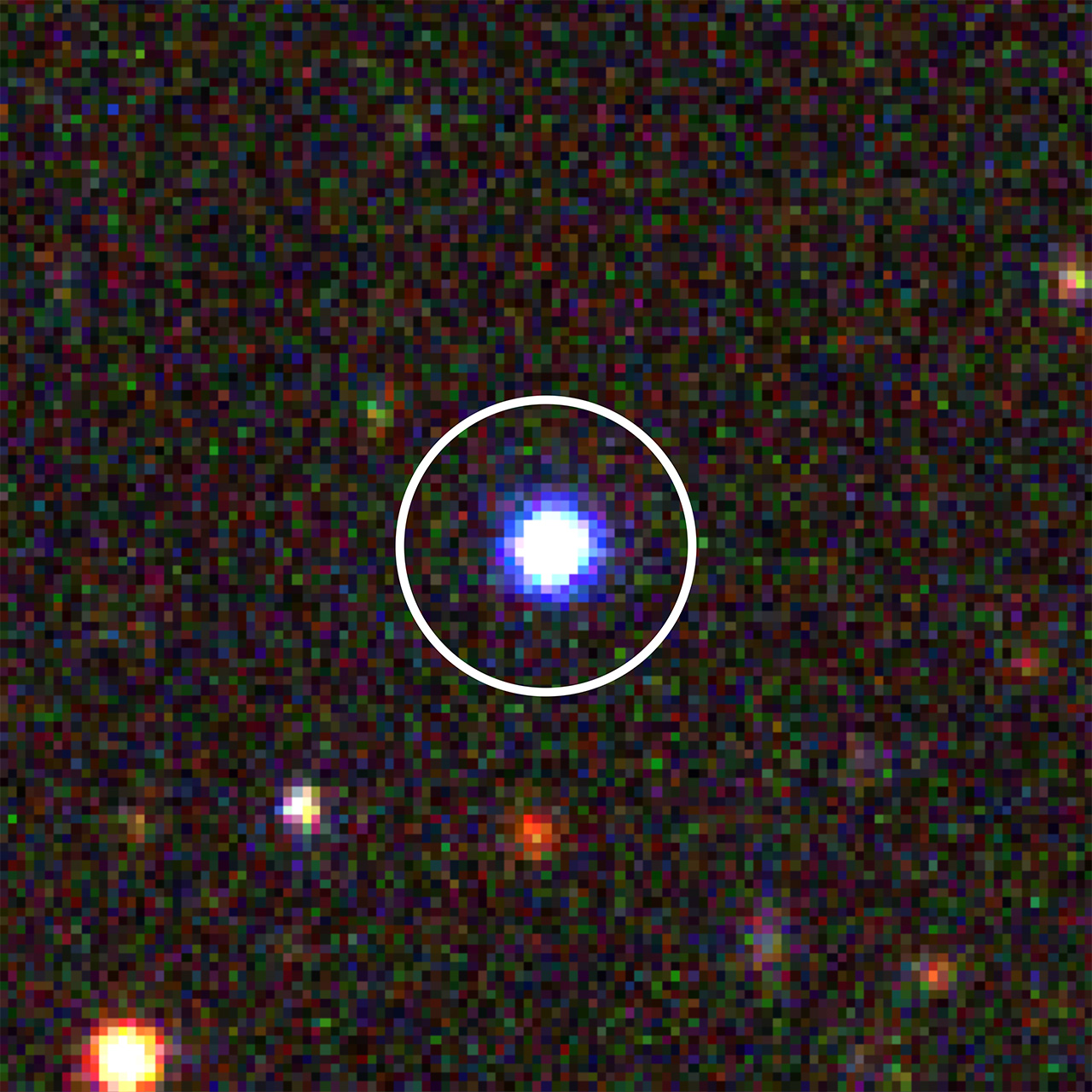
Not all discoveries turn out to be actual new discoveries. This was the case for the extremely red objects (EROs) found in James Webb Space Telescope (JWST) data. Analysis shows that they are very similar to blue-excess dust obscured galaxies (BluDOGs) already reported in Subaru Telescope data.
Quasars, some of the brightest objects in the Universe, are driven by a supermassive black hole with a mass that can reach more than a billion times that of the Sun. These objects are the focus of much research, but how they form remains poorly understood. The prevailing theory is that they form in galaxies with clouds of gas and dust that obscure the growing quasar until it is powerful enough to blast away the clouds. If this is true, it should be able to catch the short timeframe where a quasar breaks out of its cloud.
Because the transition period is short, it is necessary to observe a large number of pre-quasar candidates and hope to get lucky enough to catch a galaxy just as the quasar starts to break out. Looking at data from JWST, a group of extremely red objects (EROs) were identified as possible transitionary quasars. But then researchers at the Subaru Telescope, a Japanese telescope in Hawai'i, noticed that even though they are called "red," EROs also have a significant blue component, similar to blue-excess dust obscured galaxies (BluDOGs) found in Big Data from the Subaru Telescope and described in a report last year.
Analysis showed that EROs and BluDOGs are likely the same class of objects, but important differences also exist. One possibility is that EROs are in an earlier stage in their evolution than BluDOGs. To determine the true relationship between EROs, BluDOGs, and quasars a larger sample of candidates needs to be collected. The larger sample will be studied by the next generation of astronomy instruments including an infrared space telescope project called GREX-PLUS being planned in Japan.
Detailed Article(s)
New Red Galaxies Turn Out to be Already Known Blue Galaxies
Subaru Telescope
Release Information
Researcher(s) Involved in this Release
- Akatoki Noboriguchi (Researcher @ Center for General Education, Shinshu University)
- Akio K. Inoue (Professor @ School of Advanced Science and Engineering, Waseda University)
- Tohru Nagao (Professor @ Research Center for Space and Cosmic Evolution, Ehime University)
- Yoshiki Toba (Project Assistant Professor/NAOJ Fellow @ National Astronomical Observatory of Japan)
- Toru Misawa (Professor @ Center for General Education, Shinshu University)
Coordinated Release Organization(s)
- Shinshu University
- Waseda University
- Ehime University
- National Astronomical Observatory of Japan
Paper(s)
- Noboriguchi et al. "Optical Properties of Infrared-bright Dust-obscured Galaxies Viewed with Subaru Hyper Suprime-Cam", in The Astrophysical Journal, DOI: 10.3847/1538-4357/ab1754
- Noboriguchi et al. "Extreme Nature of Four Blue-excess Dust-obscured Galaxies Revealed by Optical Spectroscopy", in The Astrophysical Journal, DOI: 10.3847/1538-4357/aca403
- Noboriguchi et al. "Similarity between compact extremely red object discovered with JWST in cosmic dawn and Blue-excess Dust-obscured galaxies known in cosmic noon", in The Astrophysical Journal, DOI: 10.3847/2041-8213/ad0e00






